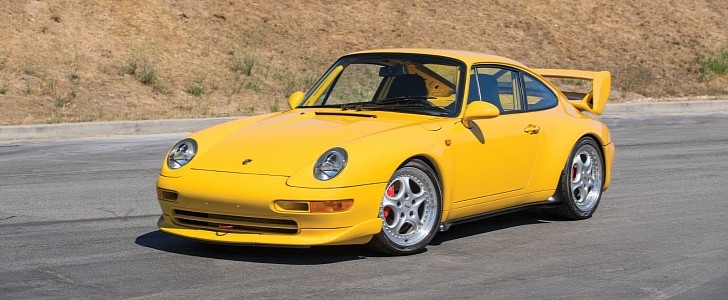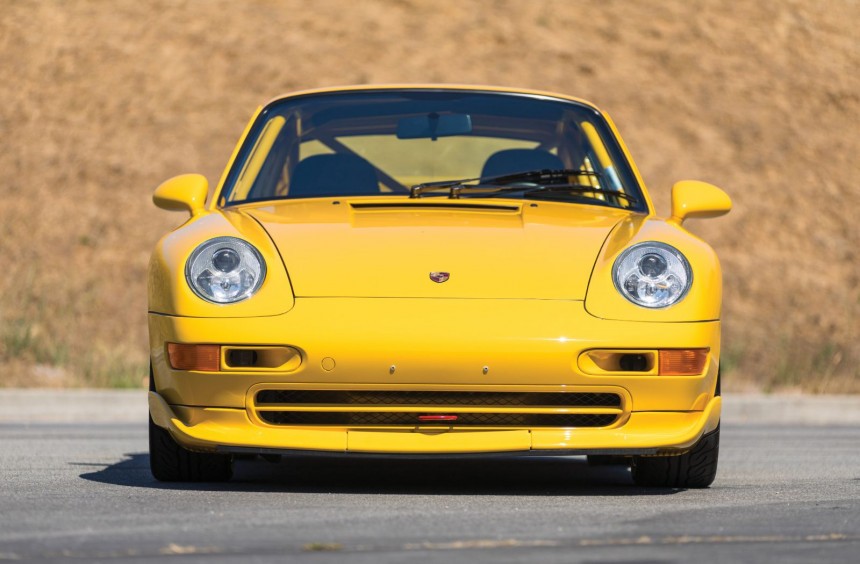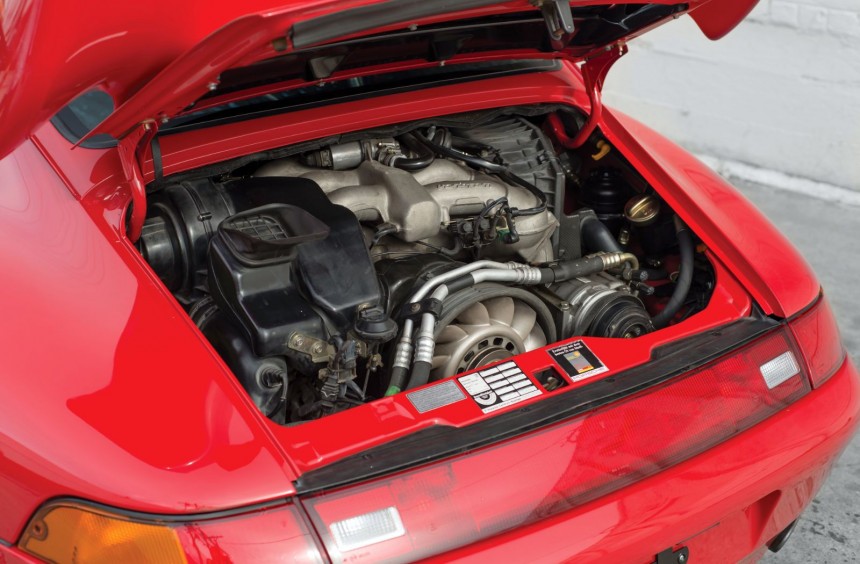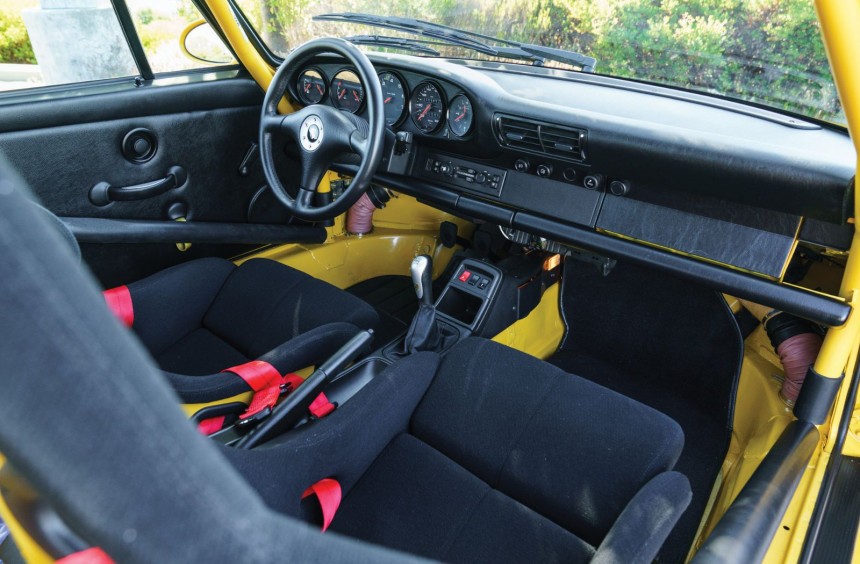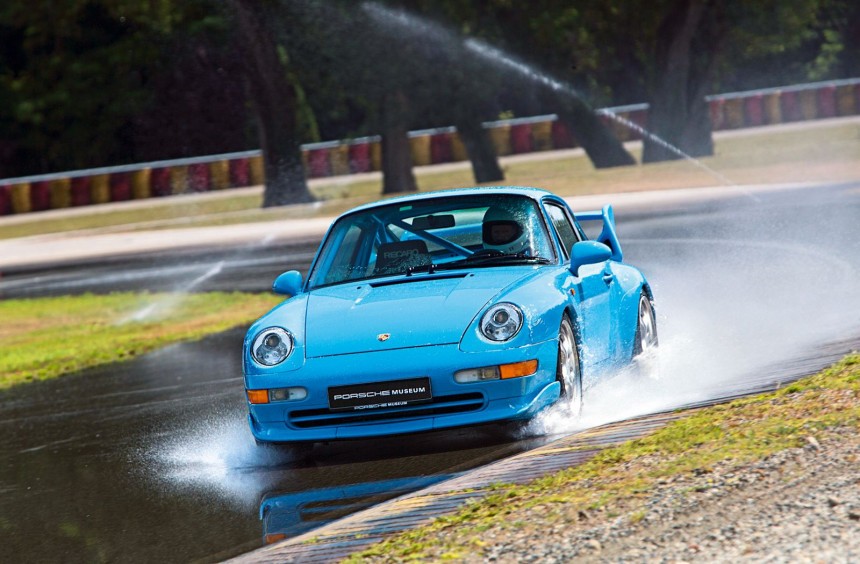A street-legal track weapon, the RS 3.8 Clubsport combined the character of a classic air-cooled Porsche with just the right amount of modern tech - like ABS or traction control - and was capable of delivering a thrilling, near-flawless driving experience.
The first RS (Racing Sport or Rennsport in German) version of Porsche’s iconic sports car made its debut at the 1972 Paris Motor Show. Created to homologate the 911 for Group 4 racing, it was a lightweight, road-legal track car that enthusiasts fell in love with.
Although the German carmaker planned to build 500 units in 1973, a total of 1,580 ended up leaving the Zuffenhausen factory. The resounding success of this model encouraged management to release an updated 3.0-liter version in 1974, but after that, the focus shifted to the 930 Turbo, and the RS was discontinued.
Fortunately, it made a comeback in the early 1990s when the 964 generation received the lightweight treatment along with an upgraded version of the standard, naturally aspirated 3.6-liter boxer. There was also an ultra-limited 3.8-liter RS available in Europe to meet homologation requirements for the GT category.
In 1994, the 993 generation was introduced, and a year later, the RS returned. Borrowing the 3.8-liter formula from its rare predecessor, it was based on the Carrera Cup competition car and was developed as a homologation special to qualify the RSR 3.8 for BPR GT3 and GT4 racing.
It featured a seam-welded body that made its chassis 40% stiffer than that of the standard 911. Moreover, it had an aluminum hood, a bespoke fixed rear wing, a front chin spoiler, and lighter three-piece aluminum wheels.
Inside, the rear bench was removed, leaving only a pair of leather-wrapped bucket seats for the driver and one lucky passenger. There were no power windows, the door handles were replaced with pull cords, and even the electric heating system from the rear window was removed.
To improve handling, the suspension and braking systems were thoroughly revamped. Race-oriented Bilstein shocks were fitted, along with adjustable front and rear antiroll bars, whereas stopping power was enhanced by cross-drilled rotors and four-piston calipers shared with the 911 Turbo.
Power came from an M64/20 flat-six equipped with lightweight forged pistons, dual oil coolers, bigger intake valves, and lighter rocker arms. It could rev up to 7,100 rpm and produce 300 hp at 6,000 rpm. The boxer was linked to a five-speed manual with a vented clutch chamber, aggressive gearing, and a short shifter.
For many enthusiasts, this car was perfection on four wheels. It looked amazing, was extremely responsive, and delivered an engaging driving experience without instilling fear - as the notorious “Widowmaker” once did.
But Porsche didn’t stop there, and like it had done with the previous-generation RS, the manufacturer released an even more track-focused version. Called Clubsport, it was easily distinguishable from the base RS thanks to its larger, adjustable rear wing and the deeper chin spoiler.
A peek inside the cabin also hinted that this wasn’t an ordinary RS. It came with a full roll cage, thinner buckets, and a lighter, airbag-less steering wheel. The stereo system was gone, and so were any traces of sound insulation or carpeting. The only convenience feature was an air conditioning system, but it only had two vents instead of four.
Apart from the addition of a single-mass flywheel, there were no modifications to the powertrain, brakes, or suspension systems. Therefore, the Clubsport’s performance figures were identical with those of the less-spartan RS. From a standstill, both variants could accelerate to 60 mph (97 kph) in about 4.7 seconds and reach a top speed of 172 mph (277 kph).
However, even with the massive roll cage, the Clubsport was around 110 lbs. (50 kg) lighter than the RS, which improved the already-sensational handling. It felt more planted to the ground through tight corners, enabling faster laps, particularly on technical tracks. Furthermore, as it was stripped down to the bare necessities, it felt, looked, and sounded like a race car, yet performed so graciously that you could drive it on public roads without fearing for your life. You can see one being driven on English streets in the video below posted on YouTube by TheCarGuys.TV.
While it wasn’t the fastest or the most powerful street-legal track car ever produced, its near-flawless maneuverability, smooth power delivery, and timeless design make it one of the most exciting driver’s cars ever built.
In total, Porsche produced 1,014 RS units between 1995 and 1996. Out of those, only 227 were delivered in super-lightweight, Clubsport spec, meaning that this version is not just the last air-cooled 911 RS but also one of the rarest.
Although the German carmaker planned to build 500 units in 1973, a total of 1,580 ended up leaving the Zuffenhausen factory. The resounding success of this model encouraged management to release an updated 3.0-liter version in 1974, but after that, the focus shifted to the 930 Turbo, and the RS was discontinued.
Fortunately, it made a comeback in the early 1990s when the 964 generation received the lightweight treatment along with an upgraded version of the standard, naturally aspirated 3.6-liter boxer. There was also an ultra-limited 3.8-liter RS available in Europe to meet homologation requirements for the GT category.
In 1994, the 993 generation was introduced, and a year later, the RS returned. Borrowing the 3.8-liter formula from its rare predecessor, it was based on the Carrera Cup competition car and was developed as a homologation special to qualify the RSR 3.8 for BPR GT3 and GT4 racing.
Inside, the rear bench was removed, leaving only a pair of leather-wrapped bucket seats for the driver and one lucky passenger. There were no power windows, the door handles were replaced with pull cords, and even the electric heating system from the rear window was removed.
To improve handling, the suspension and braking systems were thoroughly revamped. Race-oriented Bilstein shocks were fitted, along with adjustable front and rear antiroll bars, whereas stopping power was enhanced by cross-drilled rotors and four-piston calipers shared with the 911 Turbo.
For many enthusiasts, this car was perfection on four wheels. It looked amazing, was extremely responsive, and delivered an engaging driving experience without instilling fear - as the notorious “Widowmaker” once did.
But Porsche didn’t stop there, and like it had done with the previous-generation RS, the manufacturer released an even more track-focused version. Called Clubsport, it was easily distinguishable from the base RS thanks to its larger, adjustable rear wing and the deeper chin spoiler.
Apart from the addition of a single-mass flywheel, there were no modifications to the powertrain, brakes, or suspension systems. Therefore, the Clubsport’s performance figures were identical with those of the less-spartan RS. From a standstill, both variants could accelerate to 60 mph (97 kph) in about 4.7 seconds and reach a top speed of 172 mph (277 kph).
However, even with the massive roll cage, the Clubsport was around 110 lbs. (50 kg) lighter than the RS, which improved the already-sensational handling. It felt more planted to the ground through tight corners, enabling faster laps, particularly on technical tracks. Furthermore, as it was stripped down to the bare necessities, it felt, looked, and sounded like a race car, yet performed so graciously that you could drive it on public roads without fearing for your life. You can see one being driven on English streets in the video below posted on YouTube by TheCarGuys.TV.
In total, Porsche produced 1,014 RS units between 1995 and 1996. Out of those, only 227 were delivered in super-lightweight, Clubsport spec, meaning that this version is not just the last air-cooled 911 RS but also one of the rarest.
